As you count down to your due date, the 8th month of pregnancy can be an uncomfortable and anxious time. Find out what to expect with advice from a Flo expert.
-
Tracking cycle
-
Getting pregnant
-
Pregnancy
-
Help Center
-
Flo for Partners
-
Anonymous Mode
-
Flo app reviews
-
Flo Premium New
-
Secret Chats New
-
Symptom Checker New
-
Your cycle
-
Health 360°
-
Getting pregnant
-
Pregnancy
-
Being a mom
-
LGBTQ+
-
Quizzes
-
Ovulation calculator
-
hCG calculator
-
Pregnancy test calculator
-
Menstrual cycle calculator
-
Period calculator
-
Implantation calculator
-
Pregnancy weeks to months calculator
-
Pregnancy due date calculator
-
IVF and FET due date calculator
-
Due date calculator by ultrasound
-
Medical Affairs
-
Science & Research
-
Pass It On Project New
-
Privacy Portal
-
Press Center
-
Flo Accuracy
-
Careers
-
Contact Us
8 months pregnant: Development and what to expect


Every piece of content at Flo Health adheres to the highest editorial standards for language, style, and medical accuracy. To learn what we do to deliver the best health and lifestyle insights to you, check out our content review principles.
At 8 months pregnant, you may be thinking more and more about birth as you count down the weeks via a pregnancy-tracking app like Flo. While you’re no doubt getting excited to finally meet your baby, the unknowns around labor and birth can be scary. It’s normal to feel a bit up and down this month, especially if you’re experiencing any 3rd trimester pregnancy symptoms.
It might feel comforting to know that your baby has finished most of their major development by now. So, what final bits of growth are in store for them this month? How might your pregnancy symptoms change as things progress? Flo expert Dr. Renita White, obstetrician and gynecologist, Georgia Obstetrics and Gynecology, Georgia, US, gives you the lowdown on what you might expect.
Key takeaways
- This month, your baby will rapidly put on weight in preparation for when they’re born. Their liver will finish forming, and their brain and nervous system will also become fully developed.
- It’s likely your baby will start to settle into their birth position at 8 months pregnant. Reassuringly, most babies get themselves into the ideal position — head down, facing your back with their chin tucked in — by 36 weeks pregnant.
- Worries about birth are common around now, and 3rd-trimester pregnancy symptoms — like Braxton Hicks contractions — can be confusing. Deciding on your birth plan and prioritizing self-care might help you feel a little more prepared.
Take a quiz
Find out what you can do with our Health Assistant
Fetal development between weeks 32 and 35 of pregnancy
“During this time, the baby will continue to gain weight and grow in length,” says Dr. White. They’ll gain more than half a kilogram in weight this month. All that growing can take a toll on your energy levels, too, so it’s important for you to get around 450 extra calories a day during the 3rd trimester. If you’re unsure, you can always rely on a health care provider for nutritional advice throughout your pregnancy.
“Your baby’s brain is also rapidly developing and creating neurologic connections,” adds Dr. White. “However, the baby’s lungs are still immature at 8 months pregnant.”

Week 32
Between your 8th and 9th month of pregnancy, your baby’s liver will fully form. Aside from the lungs and brain, all of your baby’s organs are fully developed and ready for birth. Their skin is also no longer translucent, so they’ll be looking a lot more like the baby you’re soon going to meet.
They may also start settling into their birthing position this month. The ideal position for them to take is head down, facing your back, with their chin tucked into their chest. Most babies will settle into this position by the time you’re 36 weeks pregnant. However, there are several other positions your baby could take, which could make a vaginal delivery more complicated. Don’t worry, though; your doctor will monitor the situation if this happens and give you exercises to do to encourage them to move.
Week 33
Thirty-three weeks pregnant marks another big developmental milestone, as your baby’s brain and nervous system are now fully developed. They still need a little more time to mature, though, as currently, some of their reflexes and limb movements aren’t as coordinated as they will be.
Meanwhile, your baby’s pupils can now change in size in response to light stimuli. After birth, they’ll be very sensitive to bright light, and you may notice they have small pupils. But within a couple of weeks, their pupils will widen, and they’ll be able to see light and dark ranges and patterns.
Week 34
Your baby’s bones are continuing to harden at 34 weeks pregnant. That is, except for their skull, which stays soft and flexible to help them pass through the birth canal. Clever, huh? They’ll be born with two soft spots in their skull. The smaller spot is at the back of their head and will close when they’re around two to three months old. The larger spot is near the front and doesn’t close until they are around 18 months old.
Week 35
Remember hearing about a substance called surfactant back in month six? We’ll recap. Surfactant has the important job of preventing your baby’s air sacs in the lungs from collapsing and sticking together when they deflate. And now, at 35 weeks pregnant, your baby has produced enough surfactant to be able to breathe well after birth.
Meanwhile, at the end of month 8, things are getting pretty cozy in your uterus with your baby now the size of a papaya. Their limbs are starting to look chubbier around now. You should still feel movements, though, and may even be able to see them pressing against your 8-month-pregnant belly.
Symptoms you might experience when 8 months pregnant
Everyone experiences pregnancy differently, but the 3rd trimester can often bring new aches and pains as your baby and belly grow. “It is common to feel more pelvic pressure and backaches,” says Dr. White. “Also, swelling may occur in the feet, legs, and hands. And some people may also feel Braxton Hicks (false labor) contractions.”
Let’s look at the possible 3rd-trimester pregnancy symptoms in more detail.
Braxton Hicks contractions
These contractions are your body’s way of preparing for labor. However, they are different from true labor contractions as they don’t cause your cervix to dilate or lead to birth. They are irregular and uncomfortable rather than painful — a bit like mild menstrual cramps. Find out more via our guide on what Braxton Hicks contractions feel like.
Swelling
Fluid retention can increase around now, which, along with the weight gain, can cause your ankles and feet to swell. This can be pretty uncomfortable but isn’t uncommon. However, if swelling is severe or sudden, contact your doctor immediately. It could be a sign of a condition like preeclampsia.
Back pain
Your baby’s growth can cause backaches during the 3rd trimester as your body adjusts to carrying the extra weight.
Shortness of breath
It can be harder to take deep breaths in the 3rd trimester as your lungs don’t have enough room to expand. However, you should contact a doctor right away if the shortness of breath is sudden or severe or comes with chest pain, heart palpitations, dizziness, or vaginal bleeding.
Peeing more
Your baby can press against your bladder as they move further into your pelvis, making you feel like you need to pee more.
Insomnia
It’s common for sleep to suffer in the 3rd trimester, thanks to needing to pee more during the night and the challenge of finding a comfy position with a big belly. Check out our guide on how to sleep when you’re pregnant for 3rd trimester insomnia tips.
Fatigue
Due to sleep troubles and the extra weight you’re carrying, it’s common to feel more tired in the 3rd trimester. However, fatigue can also be a sign that your iron levels are low, so it’s worth speaking to your doctor about doing a blood test to check this out.

Nesting
So, you can’t stop batch cooking or reorganizing every nook and cranny of your home? You might be experiencing bursts of nesting energy — one of the more enjoyable symptoms in the 8th month of pregnancy.
Hemorrhoids
Hemorrhoids are common in pregnancy, caused by increased pressure on the veins in your anus, increased blood volume, and greater chances of constipation.
Varicose veins
These lumpy-looking veins are caused by the increased hormones and pressure of the baby on your blood vessels.
Leg cramps
These can often strike at night as your pregnancy progresses. Leg cramps can be another reason for sleepless nights.
Heartburn
Pregnancy hormones can relax the valve between your stomach and esophagus, causing stomach acid to leak through and result in heartburn during pregnancy.
Constipation
The increase in hormones can slow down your digestive system and lead to constipation.
Taking care of yourself and your baby in the 3rd trimester
As exciting as the 3rd trimester can be, you might also feel anxious or uncertain as your due date approaches. “Uncertainty is normal when you know the delivery date is near but don’t know exactly when it will occur or what to expect,” says Dr. White. “These feelings may also be triggered when you have new symptoms that seem similar to labor, like Braxton Hicks contractions. It’s important to check in with your mental health at 8 months pregnant because anxiety and nervousness may be creeping up as you get closer to delivery.”
Don’t hesitate to speak to a health care provider if you’re at all worried or have questions. Meanwhile, the Flo app has plenty of self-care tips as you track your pregnancy week by week. You can also get support from other parents-to-be via our Secret Chats.
Checking things off your 3rd-trimester checklist is another way to help you feel more in control. For example, this month can be a good time to:
- Learn about the different stages of labor. While you can’t predict exactly how the big day will pan out, knowledge is power. Understanding what happens to the body during labor can help you feel more prepared.
- Create your birth plan. This is a document setting out how — in an ideal world — you’d like your birth to go. The idea is to share this with any doctors and nurses supporting you during birth so they are aware of your preferences. For example, you may want them to know you’re open to pain relief or that you hope to have a water birth.
- Pack a hospital bag. From hair ties to charging cables, there are all kinds of handy items that can make your hospital stay more comfortable. Our hospital bag checklist has it all covered, so you don’t have to worry about leaving anything behind.
- Make time for relaxation and self-care. “Because there may be several discomforts of pregnancy at this point, it may be useful to find supportive measures to make yourself feel good,” says Dr. White. “This could also include baths, yoga-type stretches, prenatal massages, and more rest.” So go ahead and treat yourself — doctor’s orders.
More frequently asked questions about being 8 months pregnant
How big is an 8-month pregnant belly?
“The belly will continue to enlarge and should be very noticeable at 8 months pregnant,” says Dr. White. “Because each person’s body is different, one person’s stomach may look larger than another’s. It’s important not to compare because it truly does depend on your body shape.”
How many inches is a pregnant belly at 8 months?
At 8 months, your fundal height may measure around 32 to 35 cm. Fundal height is the distance in centimeters from your pubic bone to the top of the uterus. After week 24 of pregnancy, the fundal height should match the number of weeks pregnant you are (plus or minus 3 cm.) “If your doctor finds that the fundal height measurement is too large or too small, they may recommend an ultrasound to confirm the size of the baby,” says Dr. White.
Is it safe to give birth at 8 months pregnant?
“At this stage, the baby would be preterm,” says Dr. White. “At birth, preterm babies may need medical assistance with breathing, eating, and gaining weight. Most babies born at this stage would need to spend some time in the neonatal intensive care unit before being discharged from the hospital.”

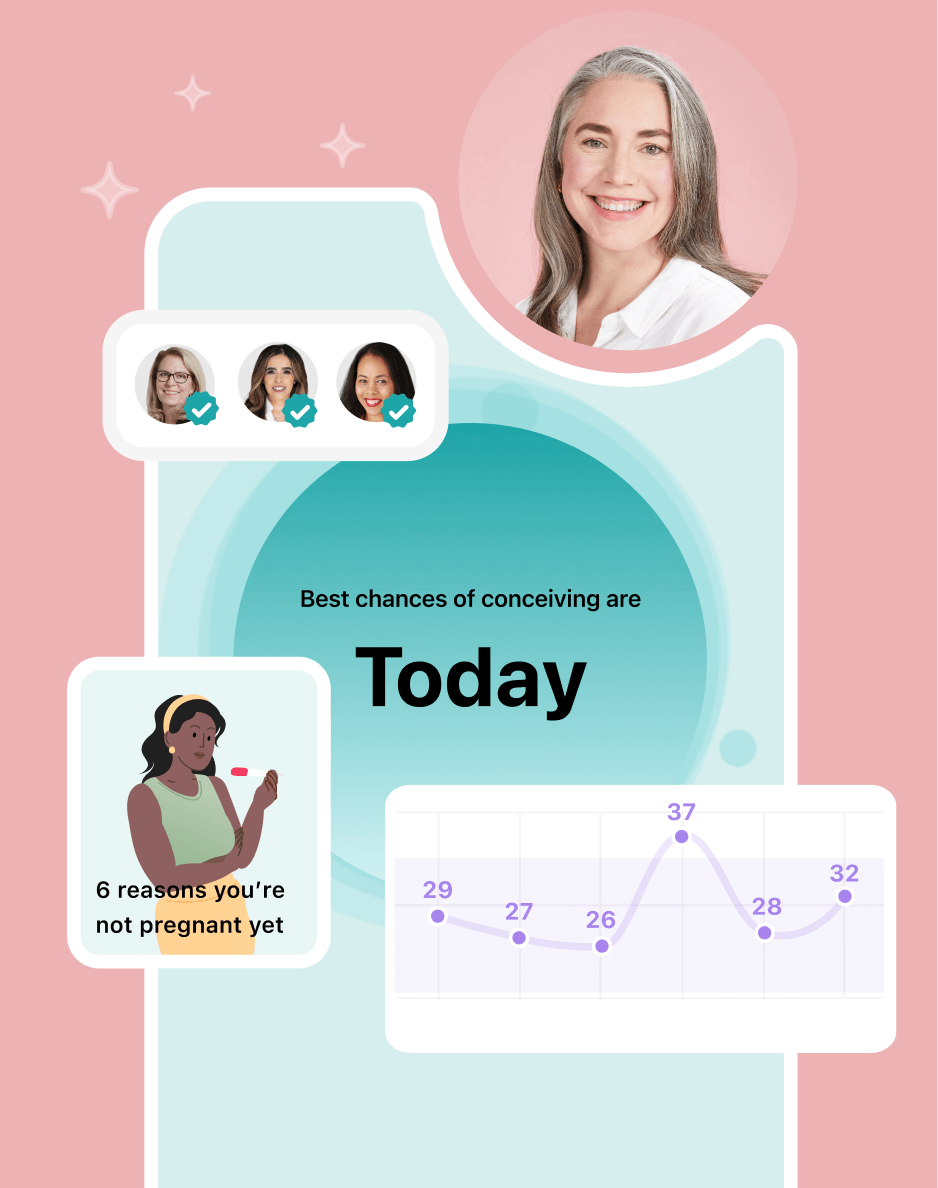
Hey, I'm Anique
I started using Flo app to track my period and ovulation because we wanted to have a baby.
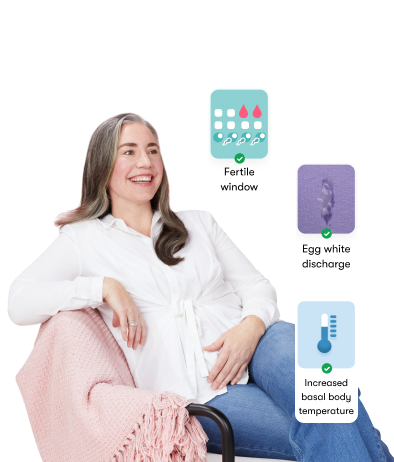
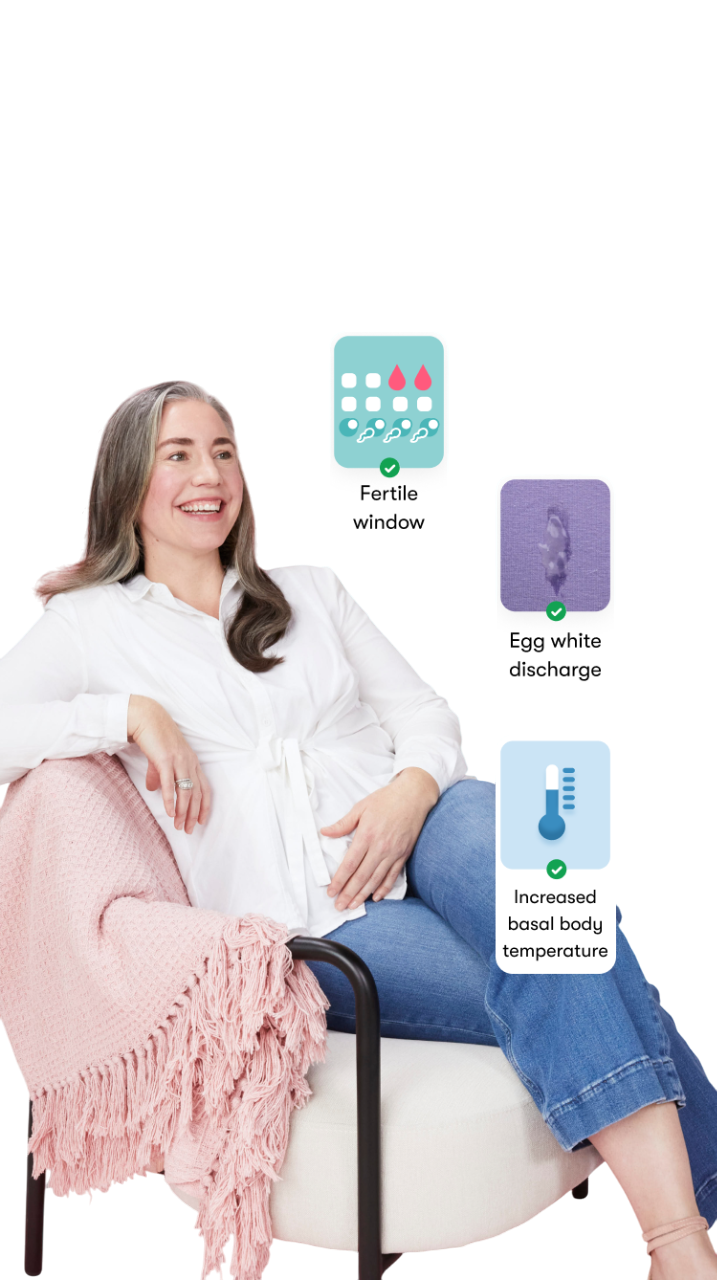
The Flo app helped me learn about my body and spot ovulation signs during our conception journey.
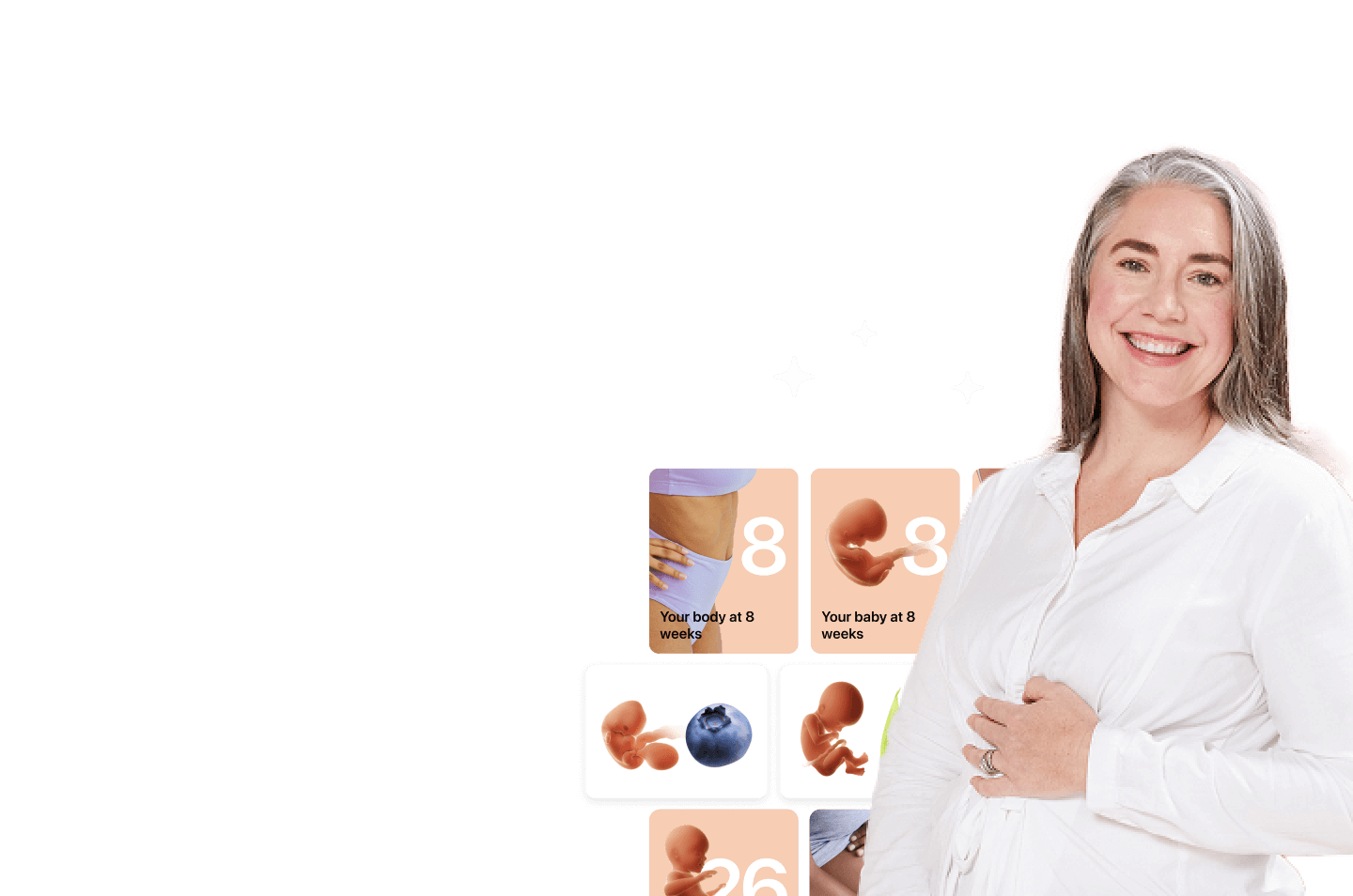
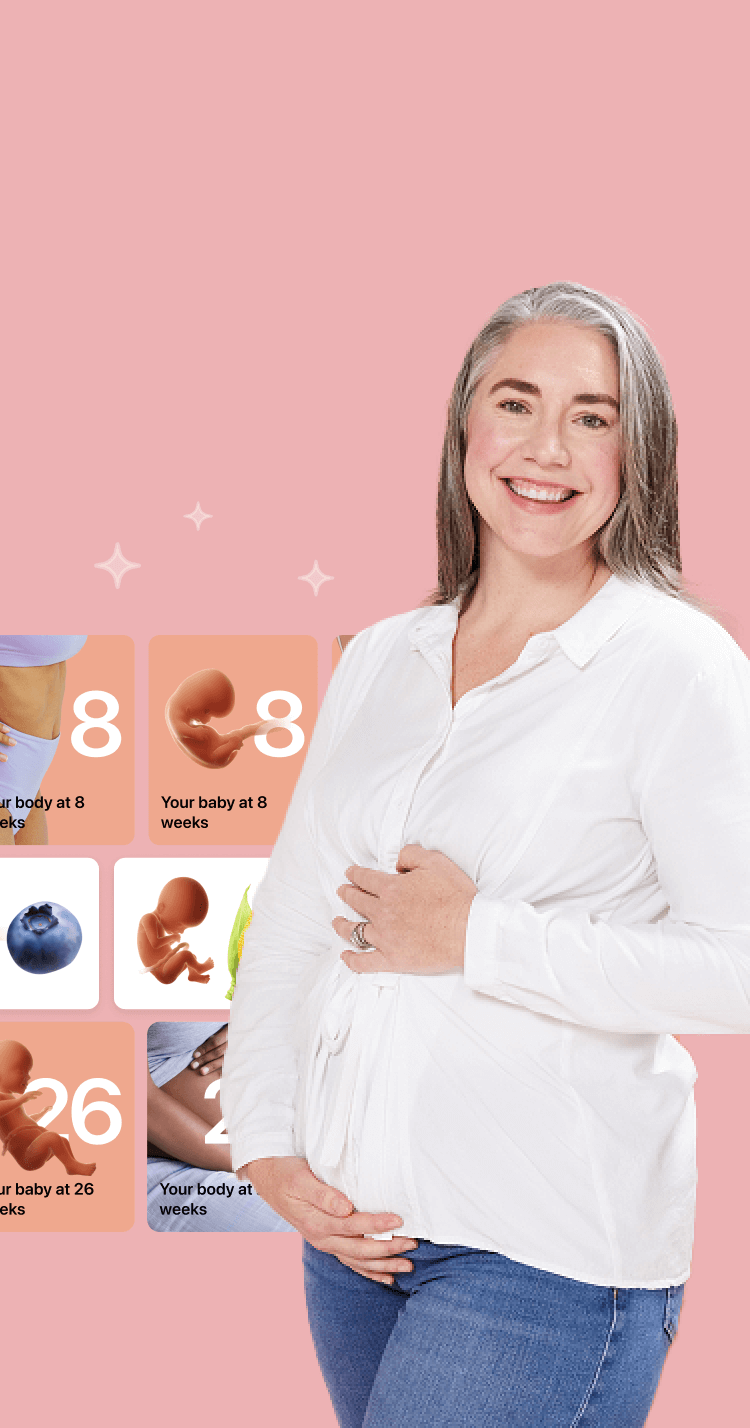
I vividly
remember the day
that we switched
Flo into
Pregnancy Mode — it was
such a special
moment.
Real stories, real results
Learn how the Flo app became an amazing cheerleader for us on our conception journey.
References
“1st Trimester Pregnancy: What to Expect.” Mayo Clinic, 27 Feb. 2024, www.mayoclinic.org/healthy-lifestyle/pregnancy-week-by-week/in-depth/pregnancy/art-20047208.
“2nd Trimester Pregnancy: What to Expect.” Mayo Clinic, 7 Feb. 2025, www.mayoclinic.org/healthy-lifestyle/pregnancy-week-by-week/in-depth/pregnancy/art-20047732.
“3rd Trimester Pregnancy: What to Expect.” Mayo Clinic, 7 Feb. 2025,www.mayoclinic.org/healthy-lifestyle/pregnancy-week-by-week/in-depth/pregnancy/art-20046767.
“Infant and Toddler Health.” Mayo Clinic, 6 Dec. 2023, www.mayoclinic.org/healthy-lifestyle/infant-and-toddler-health/multimedia/babys-soft-spots/vid-20084737.
“Fetal Development.” Cleveland Clinic, my.clevelandclinic.org/health/articles/7247-fetal-development-stages-of-growth. Accessed 12 Mar. 2025.
Curran, Mark A. “Fetal Development.” Perinatology.com, perinatology.com/Reference/Fetal%20development.htm. Accessed 12 Mar. 2025.
“Fetal Development: The 2nd Trimester.” Mayo Clinic, 3 June 2022, www.mayoclinic.org/healthy-lifestyle/pregnancy-week-by-week/in-depth/fetal-development/art-20046151.
“Fetal Development: The 3rd Trimester.” Mayo Clinic, 3 June 2022, www.mayoclinic.org/healthy-lifestyle/pregnancy-week-by-week/in-depth/fetal-development/art-20045997.
“Fetal Positions.” Cleveland Clinic, my.clevelandclinic.org/health/articles/9677-fetal-positions-for-birth. Accessed 12 Mar. 2025.
Giancotti, Antonella, et al. “Functions and the Emerging Role of the Foetal Liver into Regenerative Medicine.” Cells, vol. 8, no. 8, Aug. 2019, p. 914, doi:10.3390/cells8080914.
“Hemorrhoids during Pregnancy.” Cleveland Clinic, my.clevelandclinic.org/health/diseases/23498-pregnancy-hemorrhoids. Accessed 12 Mar. 2025.
Khawar, Hina, and Komal Marwaha. “Surfactant.” StatPearls, StatPearls Publishing, 12 June 2023, www.ncbi.nlm.nih.gov/books/NBK546600/.
“Kick Counts.” Cleveland Clinic, my.clevelandclinic.org/health/articles/23497-kick-counts. Accessed 12 Mar. 2025.
“My Premature Baby’s Development in the Womb: Week 33.” Tommy’s, www.tommys.org/pregnancy-information/premature-birth/my-premature-babys-development-womb-week-33. Accessed 12 Mar. 2025.
“Nutrition during Pregnancy.” The American College of Obstetricians and Gynecologists, June 2023, www.acog.org/womens-health/faqs/nutrition-during-pregnancy.
Raines, Deborah A., and Danielle B. Cooper. “Braxton Hicks Contractions.” StatPearls, StatPearls Publishing, 8 Aug. 2023, www.ncbi.nlm.nih.gov/books/NBK470546/.
“Staying Comfortable in the Third Trimester.” Northwestern Medicine, May 2022, www.nm.org/healthbeat/healthy-tips/staying-comfortable-in-the-third-trimester.
Bunce, Emily E., and Robert P. Heine. “Swelling during Late Pregnancy.” MSD Manual Consumer Version, July 2023, www.msdmanuals.com/home/women-s-health-issues/symptoms-during-pregnancy/swelling-during-late-pregnancy.
“Third Trimester.” Cleveland Clinic, my.clevelandclinic.org/health/articles/third-trimester. Accessed 12 Mar. 2025.
“Varicose Veins While Pregnant.” Cleveland Clinic, my.clevelandclinic.org/health/diseases/23331-varicose-veins-in-pregnancy. Accessed 12 Mar. 2025.
Boyd, Kierstan. “Vision Development: Newborn to 12 Months.” American Academy of Ophthalmology, 12 July 2024, www.aao.org/eye-health/tips-prevention/baby-vision-development-first-year.
Marnach, Mary. “What Is a Fundal Height Measurement? Why Does It Matter?” Mayo Clinic, 7 Mar, 2024, www.mayoclinic.org/healthy-lifestyle/pregnancy-week-by-week/expert-answers/fundal-height/faq-20057962.
“You and Your Baby at 33 Weeks Pregnant.” NHS, www.nhs.uk/pregnancy/week-by-week/28-to-40-plus/33-weeks/. Accessed 12 Mar. 2025.
“You and Your Baby at 34 Weeks Pregnant.” NHS, www.nhs.uk/pregnancy/week-by-week/28-to-40-plus/34-weeks/. Accessed 12 Mar. 2025.




